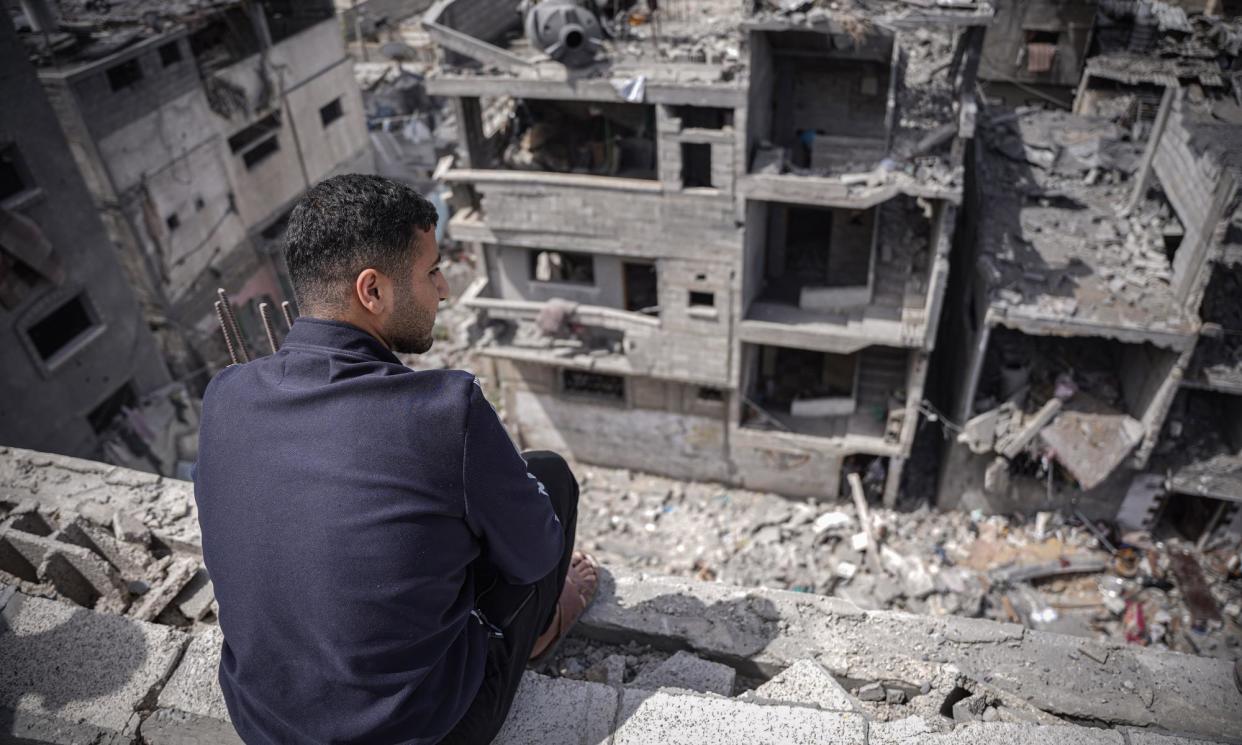Is there about to be a breakthrough in the Gaza ceasefire talks?

What is happening with ceasefire talks between Israel and Hamas?
There has been a recent flurry of activity around the talks, with an uptick of optimism about progress.
According to Axios’s Barak Ravid, the Israeli proposal is for a potential deal with Hamas for a ceasefire in exchange for the release of hostages and talks over the “restoration of sustainable calm” in Gaza.
In recent days Hamas has also broadcast several proof-of-life videos of hostages who might be expected to be exchanged at some point during in a deal, which could increase domestic political pressure on Israel, where the issue of the hostages’ return is a potent issue.
The language is instructive. “Sustainable calm” suggests a solution somewhat short of the “total victory” repeatedly touted by the Israeli prime minister, Benjamin Netanyahu, who has vowed to dismantle Hamas. Intriguingly it also mirrors a suggestion for a truce from a senior Hamas official, Khalil al-Hayya, last week who floated the idea of a hudna, a word used in Islamic jurisprudence to describe a kind of long-term truce or “calm”.
However the messaging coming out of the talks has been very contradictory. While the Qataris, who represent one mediation route, have talked publicly about their frustration over stalled talks, there has been more activity in recent days around Egyptian-Israeli talks – a forum that has delivered ceasefires in previous conflicts. A senior Israeli official told Hebrew media that talks with the Egyptians were “very good, focused, held in good spirits and progressed in all parameters”.
The position of the US, which has been pushing for a ceasefire deal, is that there is a good deal on the table, with the onus on Hamas to budge.
With Hamas saying it is looking at the new Israeli offer, reports in the Israeli media on Sunday indicated recent meetings of the Israeli security cabinet suggested a more “flexible” position. The US secretary of state, Antony Blinken, is also expected to visit Israel in the coming days to discuss the negotiations.
What about Israel’s threat to launch an offensive against Rafah?
Israel has made it very clear that it is using the prospect of a Rafah operation, and its visible preparations for it – including the construction of large tented encampments – as an explicit threat to Hamas, essentially saying that this represents the last opportunity for a ceasefire.
Complicating the issue, however, is the fact that Hamas is abundantly aware of the strong opposition internationally to Israel going into Rafah, not least in Washington, which has undercut this message.
Underlining this, the New York Times said on Friday that the Biden administration was considering imposing restrictions on defence exports to Israel if it launched a large-scale operation in Rafah.
Making the link explicit, Israel’s foreign minister, Israel Katz, told Channel 12 after meeting the Egyptian delegation: “If there is a deal, we will suspend the operation. The release of the hostages is a deep priority for us.”
Some Israeli commentators are also pointing to speculation that the international criminal court may be considering issuing arrest warrants for senior Israeli officials as driving a renewed openness to talks.
What’s on the table?
The essential shape of any deal hasn’t changed that much. It would be presented as a “humanitarian ceasefire”. At the heart of talks is a ceasefire-for-hostages arrangement. Hamas would release hostages in exchange for a ceasefire lasting weeks and the release of Palestinian prisoners in Israeli jails. The talks have stalled around both major issues – Hamas’s maximalist demand that Israeli troops withdraw from Gaza and end the conflict – and granular detail, not least about numbers and which Palestinian prisoners should be released.
The current formula would apparently allow the release of a slightly smaller number of hostages, 33 sick, elderly and wounded – representing the number of surviving hostages in the humanitarian category – in exchange for unspecified numbers of Palestinian prisoners.
What is unclear is what the release of the humanitarian hostages would mean for those in other groups, including captive soldiers.
Some reports have suggested that Israel has indicated willingness to make further concessions in the future, including withdrawing forces who are cutting the Gaza Strip in half and allowing the return of residents to the north.
There are also suggestions that the conversation in Israeli security circles may have moved from the destruction of the last four largely intact Hamas battalions in Rafah to whether closing the Hamas arms-smuggling routes from Egypt would achieve the same long-term objective, requiring a new agreement with Egypt over control of – and monitoring of – the so-called Philadelphi route on the border.
Are the talks in good faith?
We have been here before, and there is a lot of cynicism in the positioning on both sides. Both Israel and Hamas will be manoeuvring to be able to suggest the other side is responsible for any failure in the current ceasefire talks.
However there seems to be some genuine movement for now, although the devil is in the detail, not least over which Palestinian prisoners would be released.
While the dynamics on the Hamas side remain largely opaque, not least around the position of the leader of Hamas in Gaza, Yahya Sinwar, Netanyahu’s difficulties with his own coalition remain in evidence. Far-right coalition partners, including Itamar Ben-Gvir, remain opposed to any deal. However, a recent uptick in public support for Netanyahu, and drop in support for the senior cabinet member Benny Gantz, may have taken some of the pressure off him.
Speaking to Haaretz, a senior Qatari official accused both sides of sabotaging the process each time they came close to a deal.


